1-SEP-2020
Introduction to data analytics
Recording of zoom session: Data analytics progression
Types of data and strip survey
- TR.102.DS.3.A - Decompose the data analytics field
- TR.102.DS.1.A - Data Tables - Creating: Create a data table with logically assigned types for each column and a unique identifier for each row
Please develop a "strip survey" containing a categorical question and a opinion/spectrum question. Compose the tiny survey in a text document and upload to a folder named with your public ID in our shared drive.
Navigate to Strip surveys then Fall 2020
8-SEP-2020
Session recordings (FA20)
Part 1: Data encoding
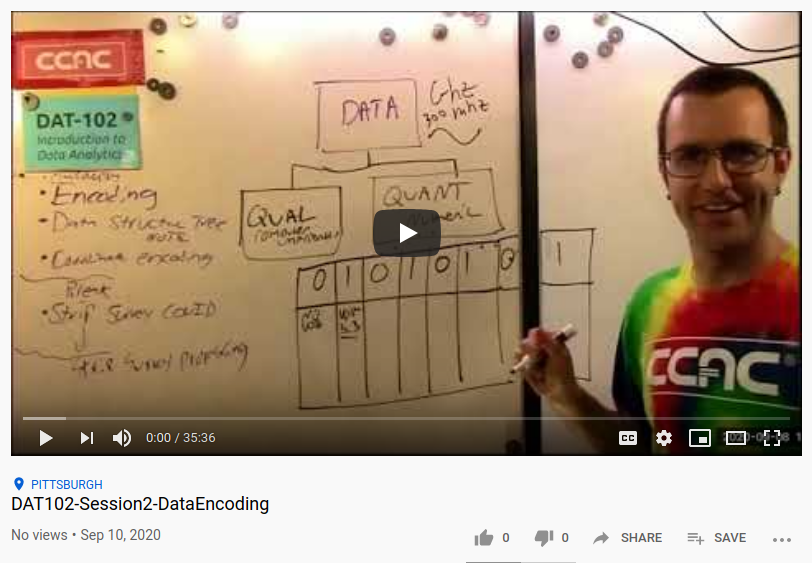
Part 2: Data structures overview
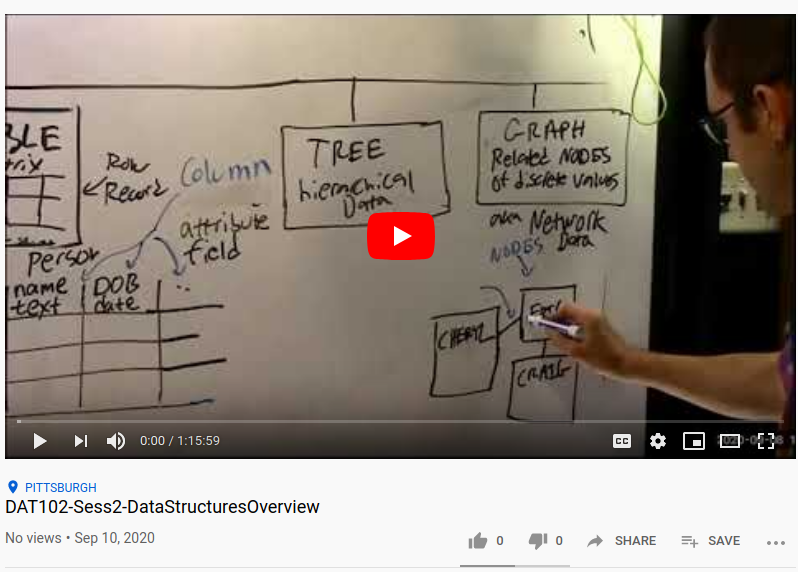
Graph exercise:
With all your representations complete, open our shared upload directory below. Create a new directory named with your first name and the topic of your data. Upload an image file of your graph into the directory.
- Broadly Classify data analytic artifacts/products/displays (Quant/qual/categorical/textual)
- TR.102.DS.3.C - Continuous & categorical variables
- TR.102.DS.3.D - Data structures (list, set, stream, table, graph, tree)
- TR.102.DS.3.E - Analytic modes: describing, modeling, predicting
- TR.102.DS.1.B - Data Tables - Converting: Export and import data tables in .xslx, .ods, .csv formats
Fall 2020
- Finish your graph, upload to onedrive
- Choose a graph that's interesting to you, and create a tabular representation, either on paper or in a spreadsheet. Try to encode as much of the original data as you can (i.e. do the edges have additional meaning beyond just "I'm an edge", do the nodes have values? Do they have types)
- Save your tabular representation using only your first name, not the name of the creator. Save it in the special directory called "Fall 2020_tables_ANONYMIZED_notopicorcreator"
- If you didn't make a strip survey, finish that and upload in the link above this cell.
15-SEP-2020
- Create your strip survey master drawing in the shared google drive
- By Friday 18-Sep @ midnight please have submitted responses for each of your peer's strip surveys in their respective directories.
- Starting Sat morning, and before class starts next week, please create a spreadsheet in your strip survey folder on google drive, with each survey response getting its own row/record in the table. Give each survey a unique identification number, which you can use to check your data in the spreadsheet.
22-SEP-2020
Session videos
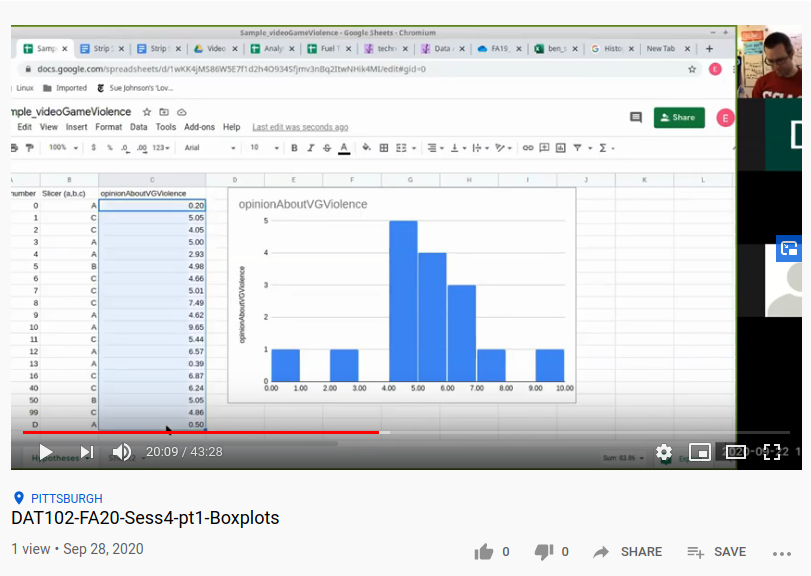
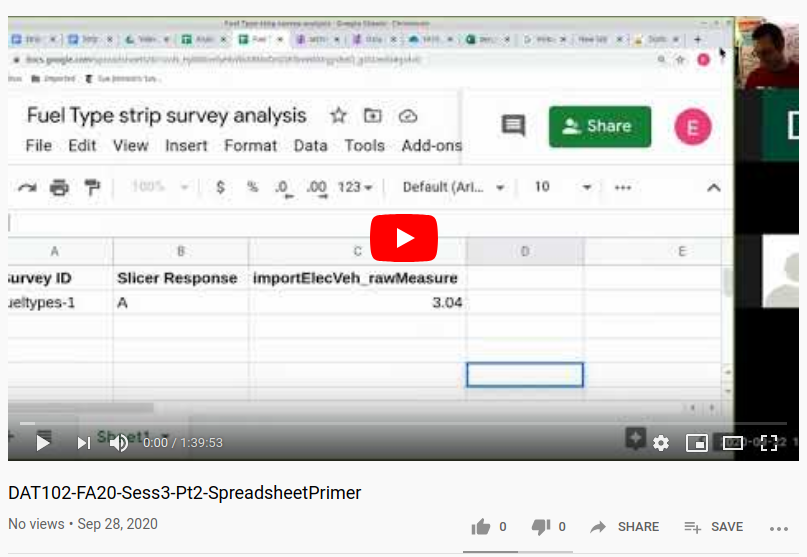
Strip survey analysis
Summary-based descriptive stats: mean and standard deviation
Extra
- Record student responses to your strip survey in a google sheet inside your google drive directory
- Measure your total line length. Enter this value in a dedicated special cell in your spreadsheet to use for scaling.
- Compute a scaled score for your slicer in the spreadsheet as a Percent of total line length. Do this by adding a new column to the right of your raw measured value.
- Use formula master skills to generate a percent of total line distance. Don't forget an absolute reference to your total line length
- With scaled values, compute your quant profile for your aggregate responses (not sliced)
- Create new tabs in your spreadsheet, one for each of your possible slicer responses. name the tabs logically, without spaces or weird characters
- Copy your aggregate data from your first sheet into each of your slicer tabs
- Select all your data and sort the data by slicer question response. Delete the rows of the responses whose slicer answer is NOT the focus of that tab
- With your responses trimmed by slicer, compute your variable profile values for each of your data sub-sets (N, min, median, max, lower fence, upper fence, left whisker, right whisker)
- With those compute values in place, use our unified box and whisker tool to create box plots for your aggregate and sliced responses
- Right click the resulting image in the box plot tool and save them to your local drive. Then upload them with sensible names to your google drive strip survey directory
- We'll do the group analysis next week.
29-SEP-2020
Session recording
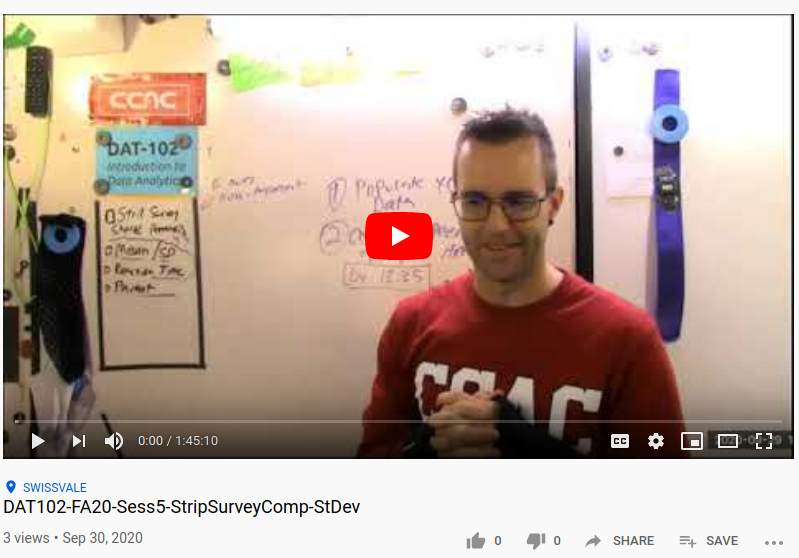
Lock^5 Book sections
Chapter 2, Sections 1-Sections 4
Draw conclusions about a data set based on box plots
Compute the standard deviation of a data set, interpret the results, and make inferences using Z-scores
- If you didn't get a chance to finish your section of the strip survey analysis or analyze a peer's data, please do so this week.
- Complete activities in Chapter 1 of Statistics Notes handout
NOTE: Several pages are in inverted order! (9 before 8, etc.)
6-OCT-2020
Applying mean, median, and standard deviation
Match up the Distribution, stats blocks, box plot, and data source in this file
Video Note: Password available from instructor or class peers
- TR.102.DS.6.A - Surveys - Designing:
- TR.102.DS.6.B - Surveys - Sampling & Administering:
- TR.102.DS.6.C - Surveys - Analyzing:
13-OCT-2020
Session Recording
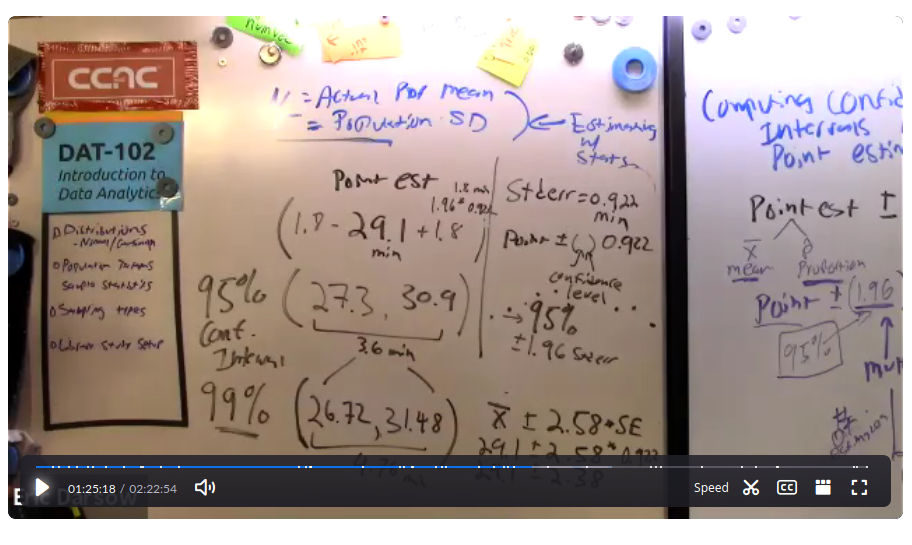
Sampling!
Begin library section sampling, to be continued next week.
Please sample 30 books from each of your two library sections: record the call number, number of pages, and some creative variable for each book in each section.
20-OCT-2020
Session recording
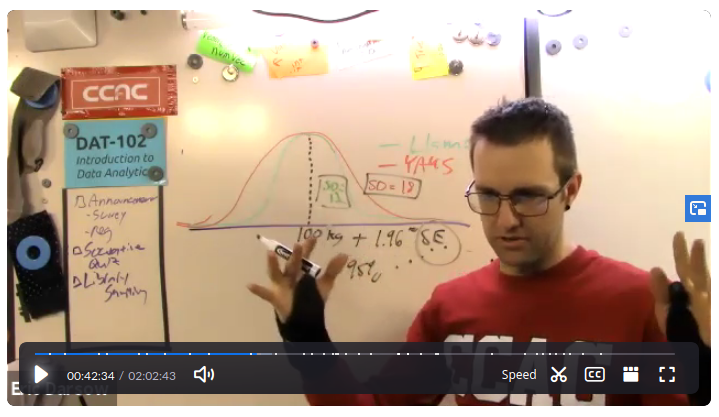
DAT Planning Survey
Library samples continued
NOTE: Skip hypothesis testing questions/sections
Dedicate a few hours hours to carefully responding to the analysis questions from your library sample. See our sampling module, and choose the library sampling mini-project. Uplod all your work in our Shared drive for library upload also linked in the module resources. Be sure to generate your own file prefix to ensure grouping of your work when the directory is sorted.
27-OCT-2020
Session Recording: Pre-groupwork
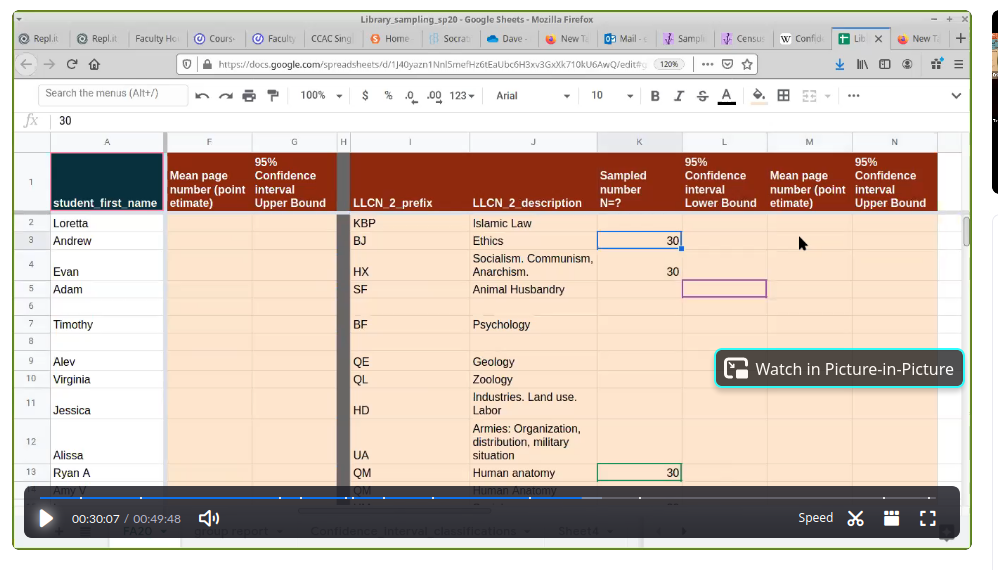
Session Recording: Post-groupwork
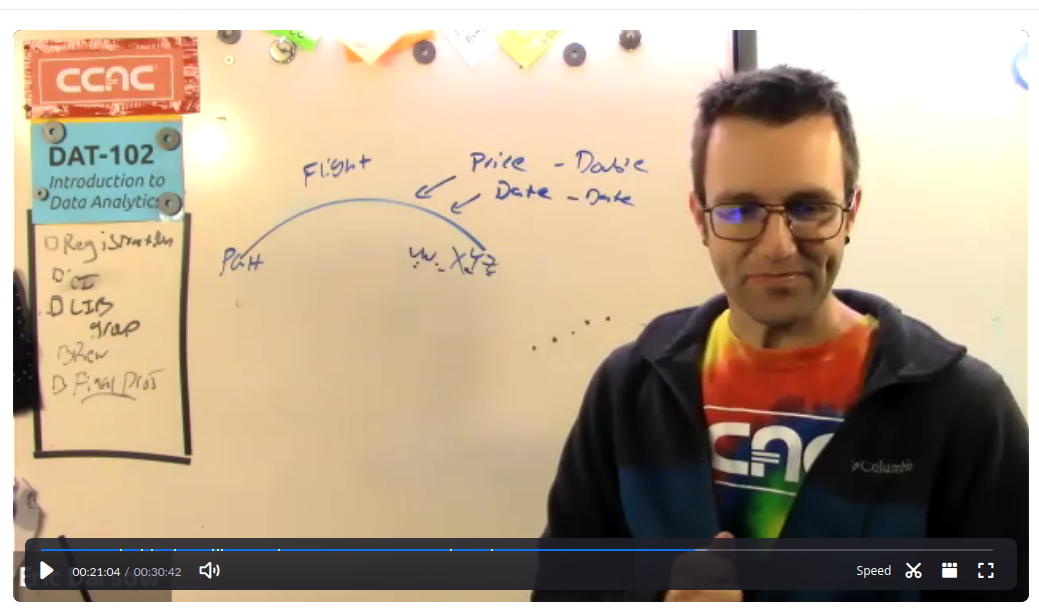
Review of CI Fundamentals
Review Library Sample Findings
- Sampling 1: Implement the process of making an inference about a population parameter from a sample.
- Sampling 2: Use a statistical package--such as StatKey--to experimentally estimate the standard error of the sampling distribution
Wrap a bow on library sampling
Complete as much as feasible of the library analysis questions and data sheets and upload them to our shared drive.
Conf. Interval article study
Please study the two American Journal of Public Health articles distributed in class. Prepare to dig into their confience intervals for each sub-population:
- Law Enforcement Agencies' Perceptions of the Benefits of and Barriers to Temporary Firearm Storage to Prevent Suicide (Feb-2019, Am J. Pub Health) by Brooks-Russell, Ashley; Runyan, Carol; Betz, Marian E.; Tung, Greg; Brandspigel, Sara; Novins, Douglas K.

- Sociodemographic Correlates of Electronic Nicotine Delivery Systems (ENDS) Use in the US (Sep-2019, Am J. Pub Health), by Spears, Claire Adams; Jones, Dina M.; Weaver, Scott R.; Huang, Jidong; Yang, Bo; Pechacek, Terry F.; Eriksen, Michael P. (2016-2017)

3-NOV-2020
Session recording
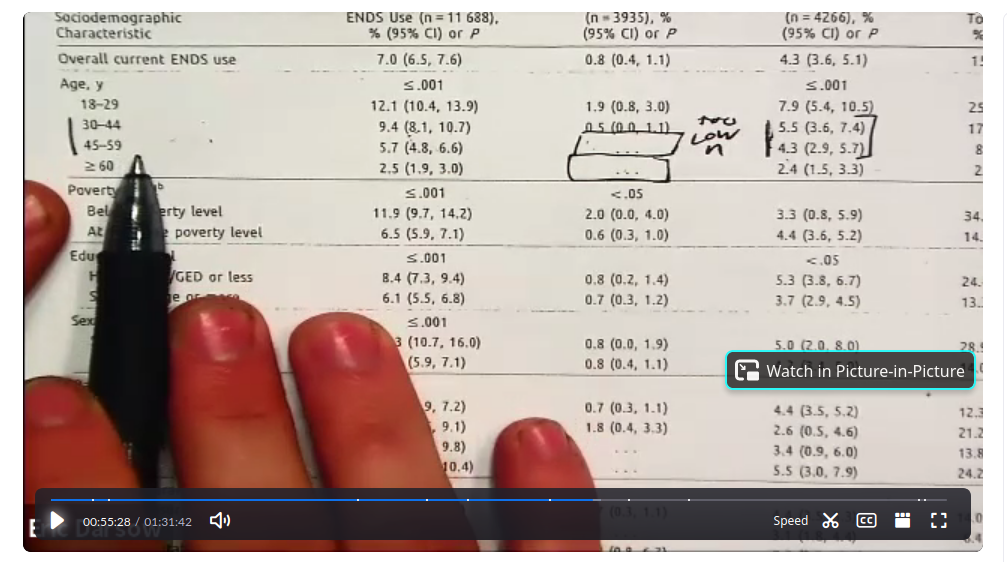
Review of ENDS article confidence intervals
Socrative quiz
Log our final project ideas
Mull on final project
Develop an idea for a final project and post in tracker
10-NOV-2020
Recording 1: Will Walker
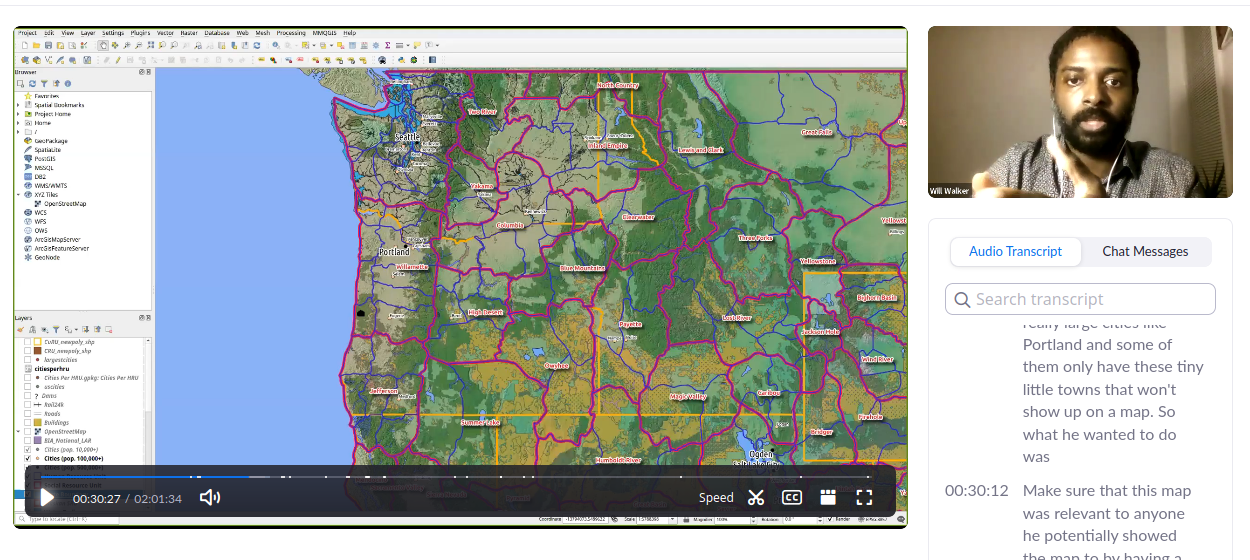
Recording 2: Group ex review
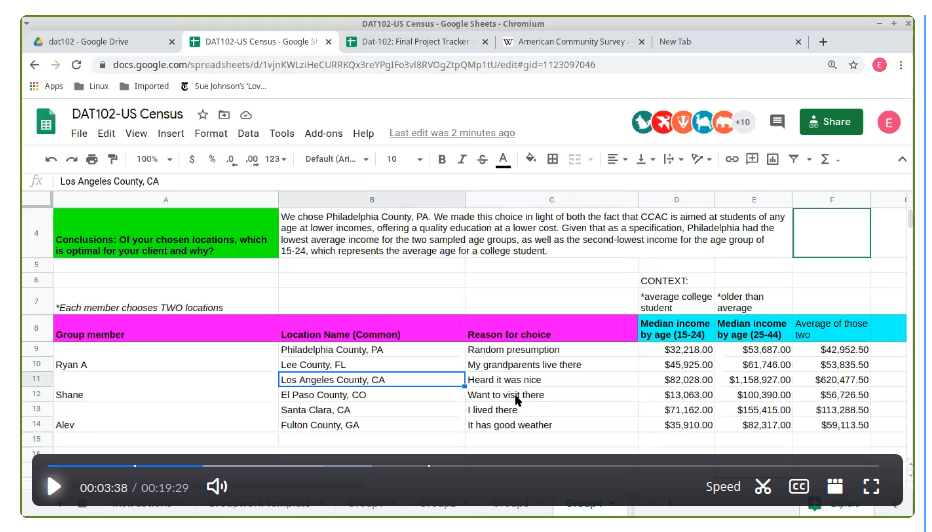
US Cesus and ACS
Guest Analyst: William Walker
The longest-running and most comprehensive sample-based data set is the US Census American Community Survey (ACS), the data from which is publicly accessible and incredibly rich.
- TR.102.DS.7.A - Experiments - Designing:
- TR.102.DS.7.B - Experiments - Treatment assignment & Implementing:
- TR.102.DS.7.C - Experiments - Analyzing:
- TR.102.Q.10 - Standard errors
- TR.102.Q.11 - Student's T-tests - Setup
- TR.102.Q.12 - Student's T-tests - Interpretation
Dig into the Opp Atlas
Please complete the exercises 0 and 1 on the Exploring the Opportunity Atlas and upload your results to our shared drive when complete. Be sure to print off the student worksheet (or edit it digitally) linked inside the module.
Est. Time: 3-ish hours
The true/false exercise in the student worksheet is very rigorous and worthy of some thought. Dedicating beyond 3 ish hours to this assignment is not intended, so please do not stress about "not finishing". I'd rather you take your time and explore the Atlas than worry about the status of your answers to questions on a worksheet. In other words, the worksheet is our means of familiarity and not meant to be an assignment in its own right.
Start thinking about your final project
17-NOV-2020
Opportunity Atlas mini-project: multi-type data policy inquiry
Opp Atlas 2
Final project practice and design
Begin final project
OPTIONAL Out of class:
Digest PGH Inquality report
Due to COVID-19 reorganiation, we will be unable to discuss the data and the sociology behind Pittsburgh's Inequality Across Gender and Race Report issued by the Pittsburgh Gender Equity Commission. As you desire, please engage with the report on your own and with others in your various circles. These discussion questions may be a guide for your discussion:
- Review the study's aggregation of smaller racial subcategories into the "AMLON" category. What are the advantages of this statistical approach? Its limitations? Would there be other ways to aggregation races into smaller categries?
- Review the Report's focus areas in the section called "Cultivating Livability." Which of these priorities do you believe are most salient at this time in Pittsburgh? Most data-based? Least data-based?
- Carefully study the comparison methodology in Appendix A. Develop a thoughtful opinion of the author's assertion on page 72, third paragrah which starts: "When outcomes, like grade reten tion rates, are similar across cities they are likely to be driven more by national policies and factors...". Can you think of any indicator patterns which do not exhibit this behavior?
24-NOV-2020
1-DEC-2020
FA20: Session Recording
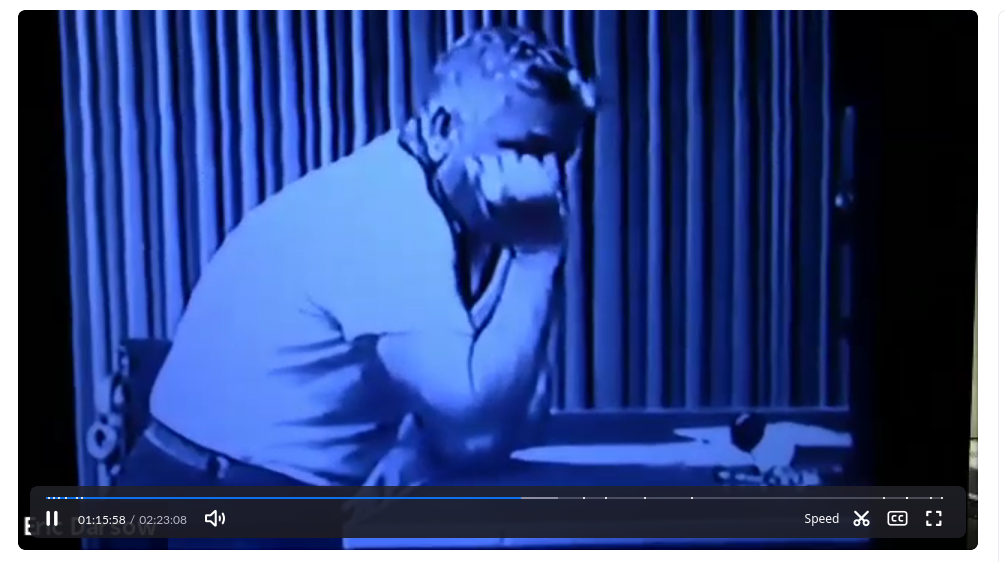
Final project concept development
8-DEC-2020